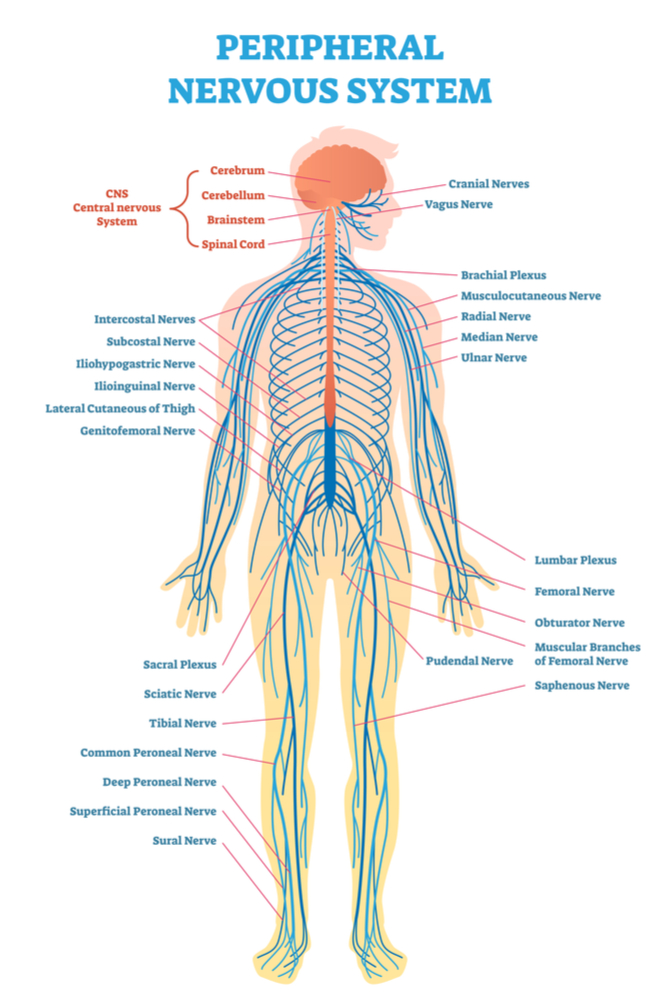Referred Pain
What is pain?
Pain in its purest form is a collection of signals that is taken up to the brain to be processed. It’s an important mechanism in the body to determine whether your body is in danger and is likened to an alarm system which goes off to warn you and prevent damage. There are several different types of signals that the brain needs to be able to interpret to determine whether you will experience pain. These include:
• Heat (touching a hot-plate)
• Pressure (cutting your finger)
• Chemical changes (lemon juice squirting into your eye)


How do nerves detect pain?
As humans, we have a very extensive web of nerves that run through our body like the roots of a tree. They run from the periphery (fingers and toes), up the arms and legs where they connect to different levels of the spinal cord depending on where in the body they originate. The spinal cord is a very thick bundle of nerve fibers which connects the rest of the body to the brain. Each of these nerves detects signals from a specific area in the body and carrying those signals to the brain allows us to localise where in the body the sensations are coming from.
What is referred pain?
Sometimes these pain messages get confused when they reach the spinal cord, as a number of different nerves at each level converge on the same point. Think of this as “cross-talk” between the nerves, where signals coming from a painful joint get mixed with signals coming from a nearby area of skin or muscle. Referred pain will almost always occur outwards from the centre of the body, for example the hip can refer pain to the knee and the lower-back can refer pain to the legs.
Because of referred pain, it may appear as though you have a problem in one part of the body, when really the issues lies elsewhere. A good clinician should always check to see whether there are any other areas that may be referring pain because treating the site of the referred pain will not fix the problem.
Common examples of referred pain that we see in the clinic include:
• Someone with a neck irritation such as issues with one of the cervical joints experiencing pain in the shoulder.
• Lower-back problems causing pain in the legs, sometimes all the way down to the calf or toes (e.g. sciatica).
• Someone with hip arthritis experiencing pain in the knee and thinking that the main problem is happening at the knee.

Get Active!
For more, visit our Frequently Asked Questions page.
If you would like to ask a question about our services or anything else, visit our Contact Us page to get in touch.
If you are ready to make an appointment, visit our make a booking page and let us help you with your fitness or recovery.

